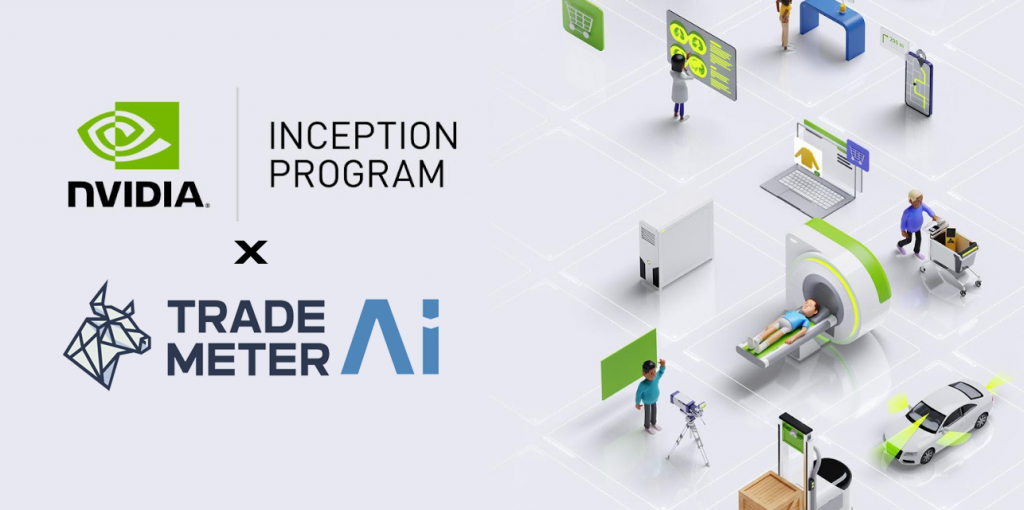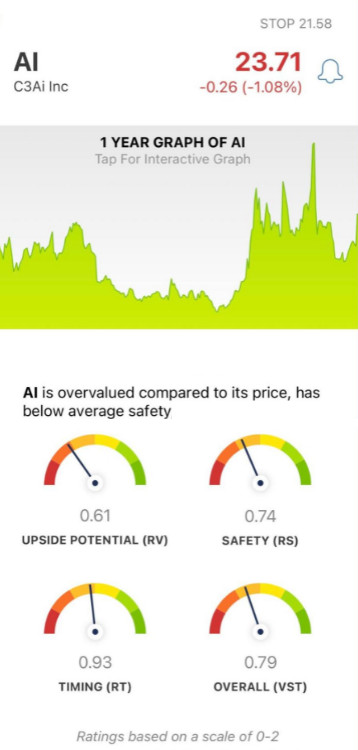Top 10 Tips For Evaluating The Accuracy And Performance Of Ai Stock Prediction/Analyzing Platforms For Trading
It’s crucial to examine the performance and accuracy of AI platforms for stock prediction and trading platforms to ensure that you are using tools that provide accurate and reliable information. Here are the ten most essential tips for evaluating these platforms:
1. Backtesting Results
What to look for: Ensure that the platform permits you to conduct back-testing to test the accuracy of its predictions based on the past data.
The reason it is important: Backtesting helps validate the AI model’s accuracy by comparing its predictions with actual historical outcomes.
Search for platforms that permit users to modify backtesting parameters, like time periods and asset classes.
2. Real-Time Performance Monitoring
What to look out for: See the response of the platform in real time market conditions.
What is important The performance in real-time of the platform is an more reliable indicator than the backtesting of historical data.
TIP: Sign up for a free trial or demo account to see how you compare the market’s real-time forecasts with actual market movements.
3. Prediction Error Metrics
What to look for: To quantify the accuracy of your forecasts, look at metrics like mean absolute error (MAE) as well as root mean squared error (RMSE), and R-squared.
Why It Matters: These measures provide a quantitative measurement of how accurate the predictions are to actual results.
Tip: Platforms that openly disclose these metrics are generally more transparent and trustworthy.
4. Ratio of Success and Win Rate
What to look for: Verify the platform’s success rate and winning rate (percentage accurate prediction).
Why it matters: A high win rate and success rate indicate higher predictability and profitability.
It is crucial to be wary of websites that make untrue claims (e.g. 90%, for instance %+),), as the system cannot guarantee its success.
5. Benchmarking against Market Indices
What to Look Out For: Compare platform predictions and results with major indexes (e.g. S&P 500, NASDAQ).
Why it Matters: It helps determine whether the platform is performing better or worse than the overall market.
Find out if the performance is consistent over time, and not just in the short term.
6. Consistency in Market Conditions
What to look for: Evaluate how the platform’s performance is affected by different market conditions.
Why it is Important The platform must be able to function in any market environments and not only when the market conditions are favorable.
Tip Test the platform’s forecasts in volatile times and during market downturns.
7. Transparency in Methodology
What to Look for : Understand AI algorithms and models (e.g. neural nets, reinforcement learning).
Why it is Important Transparency is crucial because it helps you determine the reliability and scientific accuracy of the platform.
Avoid platforms using “black box models” that don’t explain how to generate predictions.
8. Users Review and Independent Testing
What to look for What to Look For: Read reviews from users and look for independent testing or third-party reviews of the system.
What is important Why it matters: Independent reviews and tests offer objective information about the platform’s accuracy and performance.
TIP: Check for comments on forums like Reddit, copyright or financial blogs.
9. Risk-Adjusted Returns
What to look out for You can measure the performance of your platform by using a risk-adjusted metric like Sharpe Ratio or Sortino Ratio.
Why It’s Important: These metrics reflect the amount of risk that was taken to earn results. They provide a better view of overall performance.
Tip: A high Sharpe Ratio (e.g. over 1) indicates higher risk-adjusted returns.
10. Long-term track record
What to Watch Out For: Examine the effectiveness of the platform over a long time (e.g. for 3-5 year).
Why is it important The long-term track record is a more reliable indicator than shorter-term outcomes.
Tips: Avoid platforms that show only temporary or limited performance.
Bonus Tip: Try it with an Account Demo
You can check out predictions on the platform in real-time without the risk of losing any real money with a no-cost trial or demo account. You can evaluate the accuracy and efficiency of the system firsthand.
These tips will help you assess the reliability of AI stock-predicting and analysis platforms and pick one that best suits your objectives in trading and the risk tolerance. Be aware that no platform is infallible, and mixing AI insights with your own research is typically the best approach. Take a look at the recommended ai based trading platform advice for more advice including coincheckup, investment ai, using ai to trade stocks, ai investing, ai trade, ai stock picker, ai trading app, ai stock trading bot free, stocks ai, ai based trading platform and more.

Top 10 Tips On Risk Management Of Ai Trading Platforms That Can Predict Or Analyze The Price Of Stocks.
Risk management plays a crucial part in any AI-powered platform for trading stocks. It helps protect your capital by minimizing possible losses and enables you to maximize profits. A platform with strong risk management tools can assist you in navigating volatile markets, and make better decisions. Here are 10 suggestions on how you can evaluate the risk management capabilities of the platform.
1. Check out Stop-Loss and Take Profit Features
Customizable Levels: Make sure the platform allows you to create individual stop-loss limits and targets for take-profits in trades or strategies.
Make sure the platform is able to allow the use of trails stops. They will automatically adjust themselves as the markets move in your favor.
If the platform has stop-loss orders that guarantee your trade is closed at the specified price in markets that are volatile You can be assured of a profitable trade.
2. Calculate Position Size Tools
Fixed amount: Ensure that your platform allows you to create positions based on an amount of money that is fixed.
Percentage of Portfolio Determine if it is possible to define the size of your position as a percent of the total portfolio so that you can manage risk proportionally.
Risk-reward Ratio: Ensure that the platform allows for setting individual risk-reward levels.
3. Check for Diversification Support
Multi-asset trading. Make sure your platform is compatible with various asset classes, including ETFs and Forex, Options, and Stocks.
Sector allocation: Find out if your platform has tools for monitoring and managing the exposure of your sector.
Diversification in geography. Find out if your platform allows you to trade in international markets. This will help spread the geographic risk.
4. Review leverage and margin controls
Margin requirements – Make sure that the platform clarifies margin requirements clearly.
Check for limitations on leverage. This feature to control the risk you take.
Margin calls: Check if you are receiving prompt messages from the platform to ensure that your account is not liquidated.
5. Review the Risk Analytics Reporting
Risk metrics. Be sure that the platform provides you with key risk indicators (e.g. VaR, Sharpe Ratio, Drawdown) that are relevant to your portfolio.
Scenario assessment: Find out whether you can simulate various scenarios of markets on the platform to evaluate possible risks.
Performance reports: Find out if you can get detailed performance reports through the platform, including risk-adjusted performance results.
6. Check for Real-Time Risk Monitoring
Portfolio monitoring: Make sure the platform you use allows you to monitor your portfolio in real time.
Alerts and notifications: Verify whether the platform is able to provide real-time alerts for risk-related events (e.g. Margin breaches or stop-loss triggers).
Check for customizable dashboards that give you an overview of your risk profile.
7. Evaluation of Backtesting and Stress Testing
Stress testing: Make sure that the platform permits you to test your portfolios or strategies in extremely difficult market conditions.
Backtesting: Check whether the platform allows backtesting strategies based on previous data to evaluate performance and risk.
Monte Carlo Simulations: Check whether the platform uses Monte Carlo simulations in order to model and assess the possible outcomes.
8. Risk Management Regulations: Assess compliance
Regulatory compliance: Verify that the platform adheres to the relevant regulations for risk management (e.g. MiFID II, Reg T, in the U.S.).
Best execution: Verify that the platform is in line with the best execution practices. Trades are executed at the lowest price that is possible in order to reduce the chance of slippage.
Transparency Verify the platform’s transparency as well as clarity in the disclosure of risks.
9. Examine the parameters of risk that are user-controlled.
Custom risk rules – Be sure the platform allows for you to define your own risk management policies.
Automated controls for risk: Check to see whether your system can implement risk management policies upon the parameters you’ve defined.
Check whether the platform permits manual overrides for automated risk controls.
Study Case Studies, User Feedback, and Case Studies
User feedback: Review the opinions of users to assess the platform’s capability to take care of risk.
Case studies Look up cases studies or testimonials, that prove the ability of the platform to control risks.
Forums for community members Find out if there is an active community of traders who share their tips and strategies for risk management.
Bonus Tips
Free Trial: Try out the platform’s features to manage risk in real situations.
Customer support – Ensure that your platform provides a solid support for issues and questions concerning risk.
Educational sources: Find out if your platform offers educational materials or tutorials which explain risk management strategies.
These tips will assist you in evaluating risk management capabilities provided by AI platform for predicting or analyzing stocks. You’ll be able to choose a platform to ensure your capital is protected while minimizing the possibility of losses. It is essential to use a robust risk management tool for navigating volatile markets. Have a look at the most popular chart ai for trading examples for website recommendations including free ai tool for stock market india, incite ai, trade ai, copyright ai trading bot, chart ai trading, ai for investing, investing ai, ai investment app, coincheckup, best ai trading app and more.
